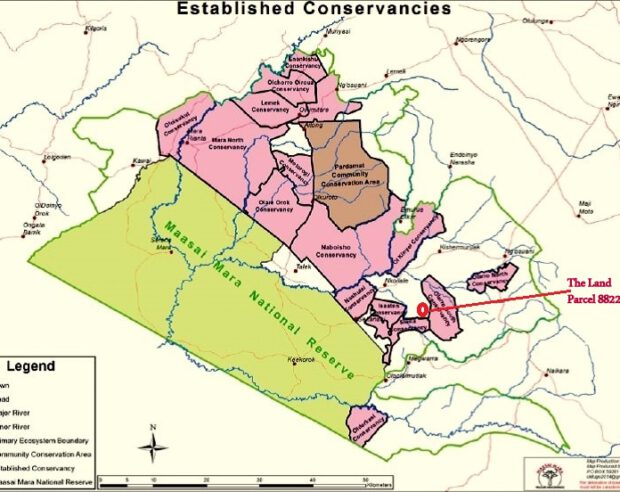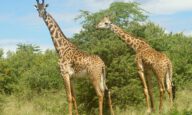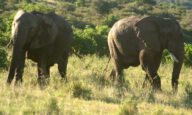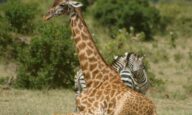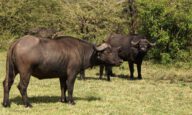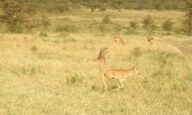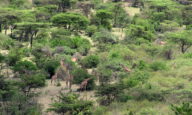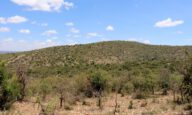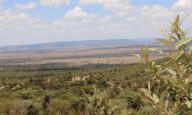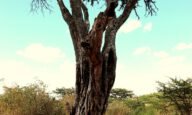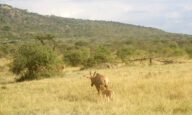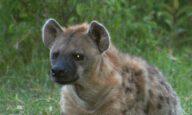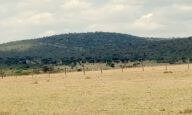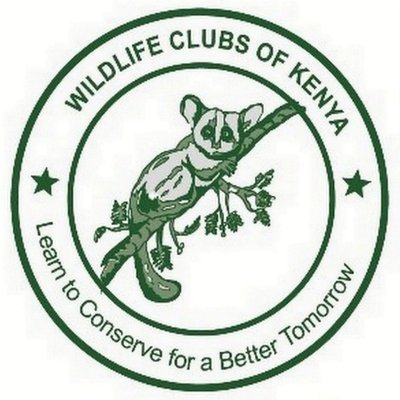The habitat
The land is adjacent to the Mara Siana Conservancy, which is situated northeast of Maasai Mara National Reserve. The 4,500 km2 Maasai Mara ecosystem has the highest density of wildlife in Kenya, harbouring about 25% of the country’s wildlife. This piece of land is on plot number 8822 and is privately owned. It is in a pristine state.
The area holds an assortment of wildlife species, and elephants roam frequently between Siana, Isaaten, Olkinyei and Naboisho conservancies. This area is dominated by acacia species interspersed with grass and springs, making the area home for multiple species.
Acquisition of the land will create a migratory corridor and habitat for wildlife between the Mara Siana Conservancy and Koiyaki Group Ranch.
Ecoregion: Northern Acacia-Commiphora Bushlands and Thickets (AT21)
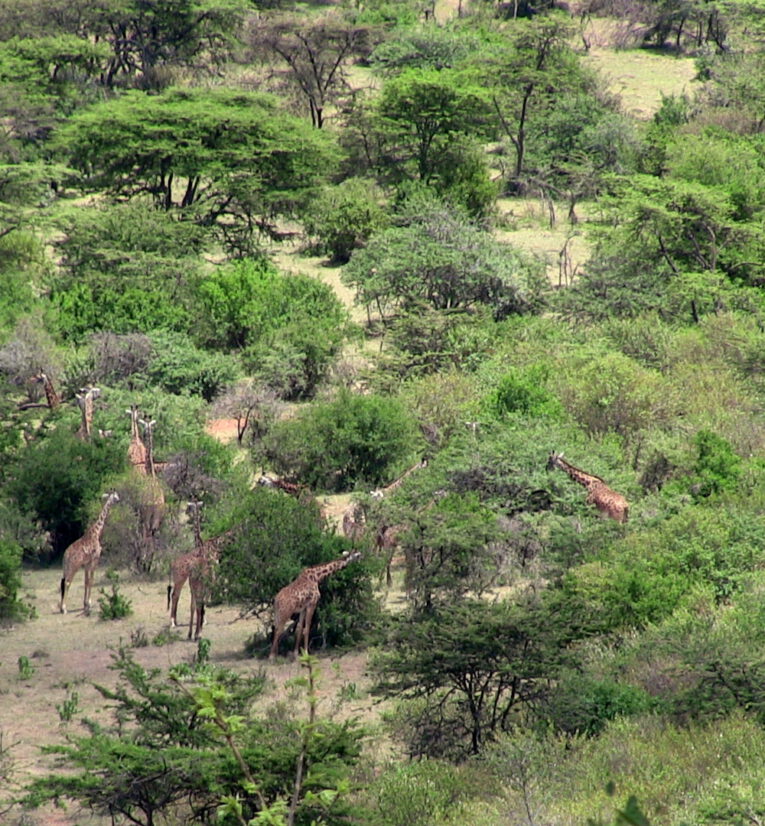
Some of the threatened species now protected in this habitat include:
Mammals:
- Critically Endangered Black Rhino (Diceros bicorn)
- Endangered African Elephant (Loxodonta africana)
- Endangered Masai Giraffe (Giraffa tippelskirchi)
- Vulnerable Lion (Panthera leo)
- Vulnerable Leopard (Panthera pardus)
Birds:
- Critically Endangered Hooded Vulture (Necrosyrtes monachus)
- Critically Endangered White-backed Vulture (Gyps africanus)
- Endangered Grey-crowned Crane (Balearica regulorum)
- Endangered Saker Falcon (Falco cherrug)
Local Partner NGO
Status of registration of the group at the national level
Nonprofit, nongovernmental organization
Governance and management structure of the group
The aim of the Wildlife Clubs of Kenya (WCK) is to build conservation knowledge, skills, values and interest among Kenya’s youth. The major activities WCK has undertaken in the last 3 years include: outreach conservation education; wildlife ecology outdoor learning; programs to save endangered wildlife, including restoring natural habitat; and the production of education materials.
WCK is led by the Patron, Dr. David Western, and two Trustees, Mr. Philemon Mwaisaka and Dr. Ibrahim Ali. Reporting to the Trustees is the Governing Council, which comprises representatives from various conservation organizations, ministries and government parastatals. The WCK Chief Executive Officer (CEO), Dr Margaret Otieno, is in charge of WCK operations and reports to the Governing Council. Under the CEO are the heads of different departments, as well as WCK regional heads and field officers, who run various regional offices and programs together with the support staff. WCK has 46 employees in total.

Conservation Plans
Wildlife habitat: The land will largely be left open as a wildlife habitat and dispersal corridor. There shall be no fence erected around the land perimeter.
Wildlife Education: There has been a lack of comprehensive conservation education for schools and communities around the Maasai Mara ecosystem. WCK will use the land as a nature learning resource, and will conduct organised programs for schools and community groups, allowing them to visit the site and learn about wildlife ecology and nature interpretation.
Conservation structures: WCK will develop three environmentally friendly conservation facilities:
(i) Office: An office to house an WCK education officer and from which to conduct programs will be developed on a small section of the land. This will also enable WCK to conduct wildlife conservation training seminars for schools and community groups.
(ii) Hostels: WCK plans to develop student hostels on the land. The hostels are meant to offer affordable accommodation for student groups, especially school wildlife clubs, from other regions of Kenya, who are visiting the Maasai Mara ecosystem.
(iii) Tent facilities: WCK will provide tent facilities for controlled camping at the site.
The Wildlife Clubs of Kenya will work closely with an established local grassroots network of schools and community groups to ensure the land is prioritised as a conservation area. Accordingly, WCK will employ rangers from the local community to patrol and ensure the land is well protected. At the same time, WCK will partner with organizations in the Maasai Mara ecosystem to propel a similar conservation agenda.
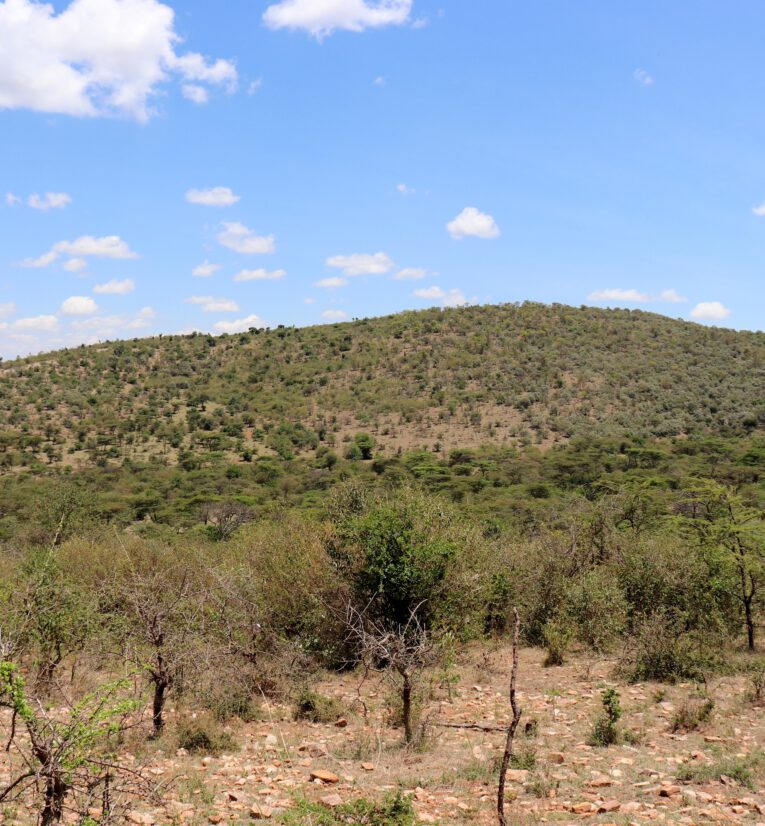
Updates
2023:
- Secured more space for the survival of the Big Five—elephants, lions, leopards, cape buffalo and rhinos.
- Maintained needed habitat for elephants, warthogs, impalas, zebras, among other mammals, to ensure the availability of water and shade during the dry season.
- Patrolled the land on a weekly basis to determine there is no human encroachment, including wood-fuel harvesting and the creation or burning of charcoal.
- Worked with the local community to develop practices that are friendly to wildlife conservation.
- Hosted Wildlife Clubs of Kenya college students studying wildlife management, tourism, and tour guiding.
2022:
- Wildlife Clubs of Kenya has signed an agreement with the Mara Siana Conservancy management where two rangers will be patrolling the land three days per week with the aim of reducing human and domestic-animal encroachment on the land. This will ensure that no logging for firewood/charcoal takes place to ensure the land remains in its pristine nature, and reduce conflict between humans and elephants.
- Elephants (Loxodonta africana), which are Endangered, have continued to inhabit the land due to the availability of water on the land. The land also offers an ideal hideout with shade during the hot and dry seasons, as well as for wallowing. We have been able to record other animal species using the land; e.g., zebras, warthogs, small antelopes (dik-diks, duikers) among others.
- We have identified a critical area on the land that requires afforestation. Due to the prolonged dry season we are currently experiencing, we have not been able to actualize this yet. Currently we are preparing the land for the tree-planting exercise, where we shall plant 200 acacia (Vachellia drepanolobium) seedlings during the coming long rainy season, i.e. in March and April 2023. The tree planting shall be carried out together with Wildlife Clubs of Kenya members of schools and community members of the areas adjacent to the land.
